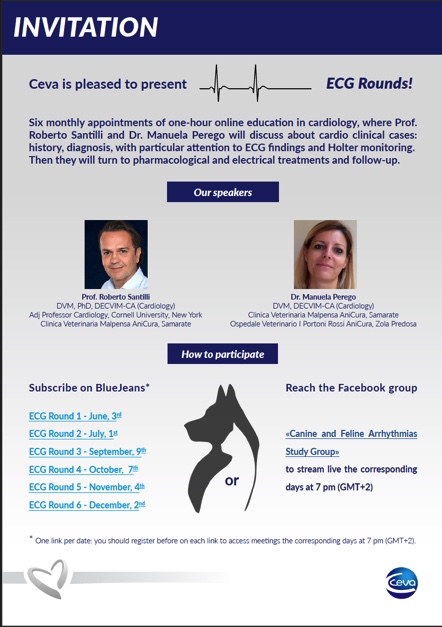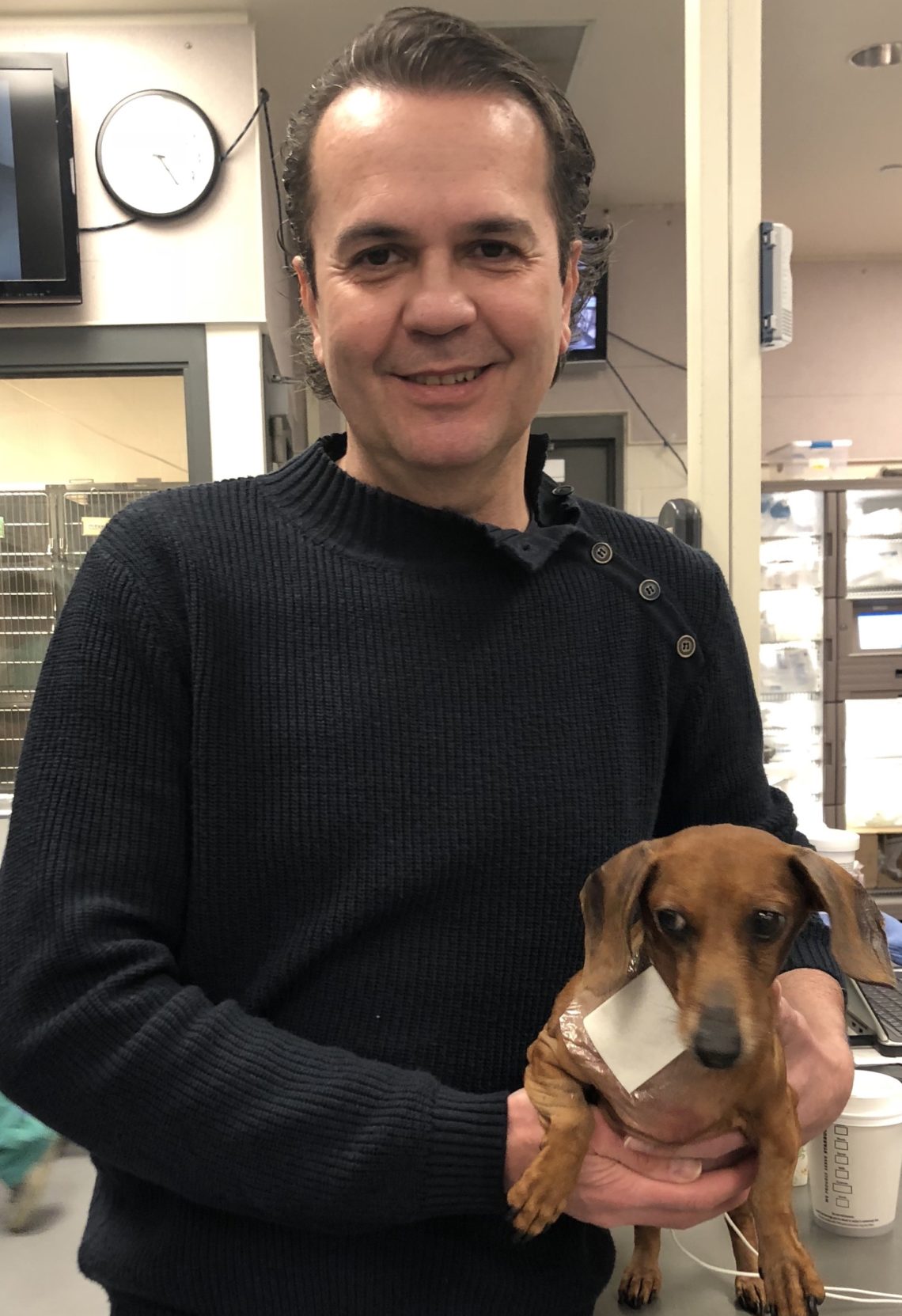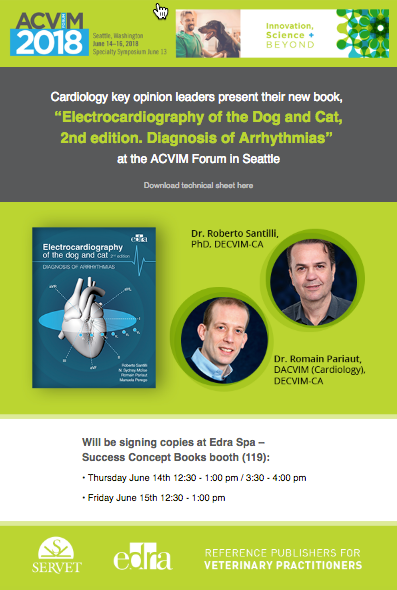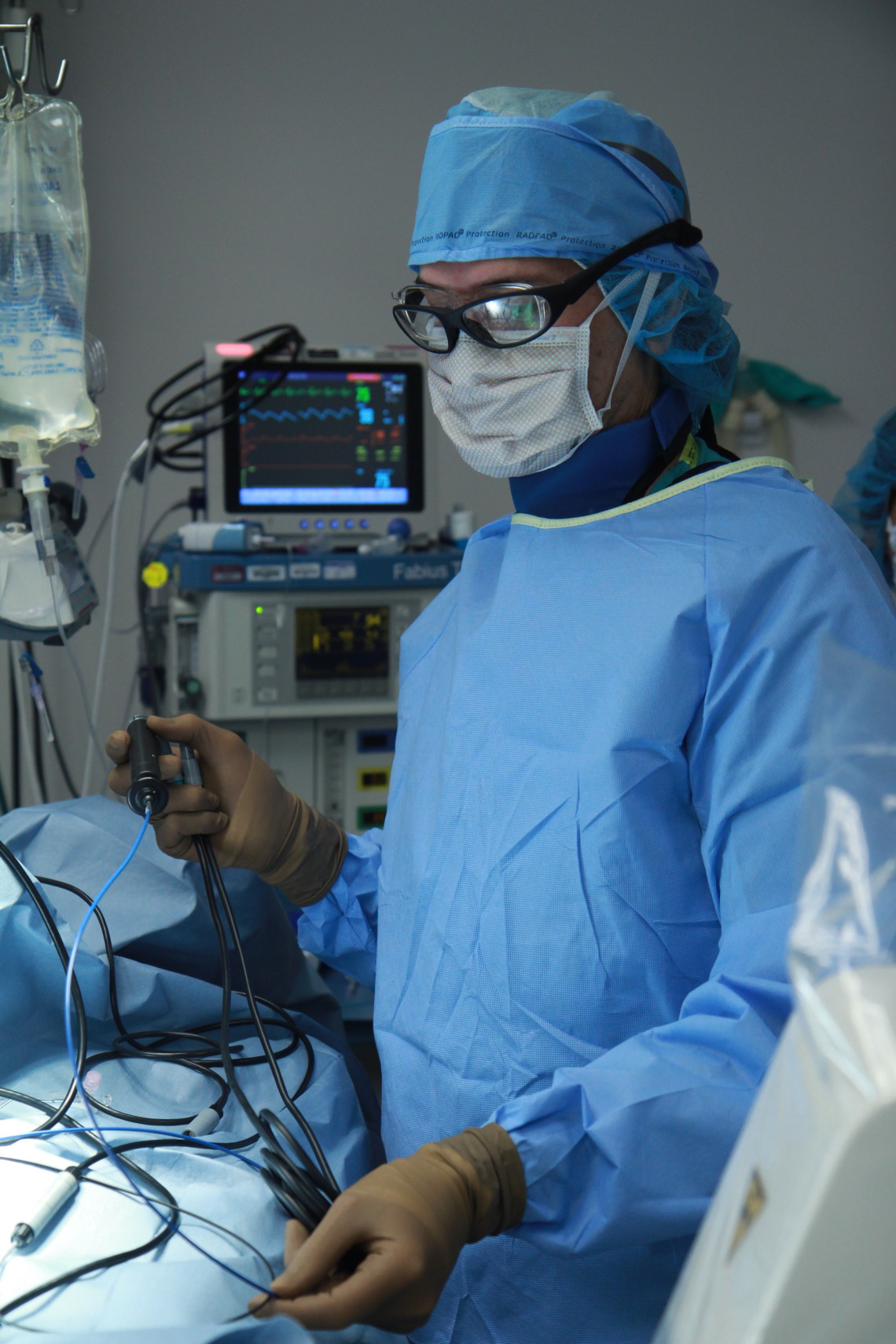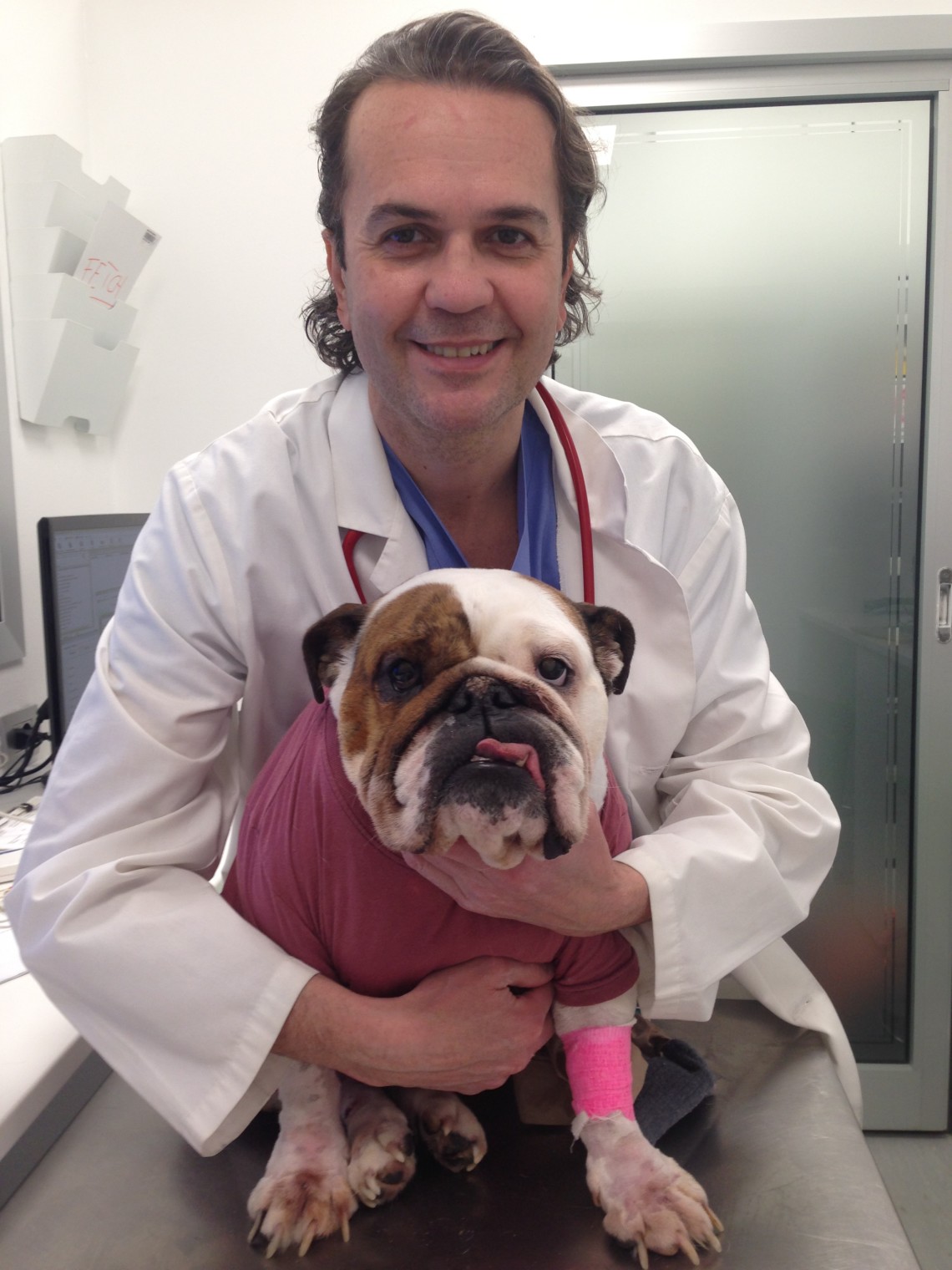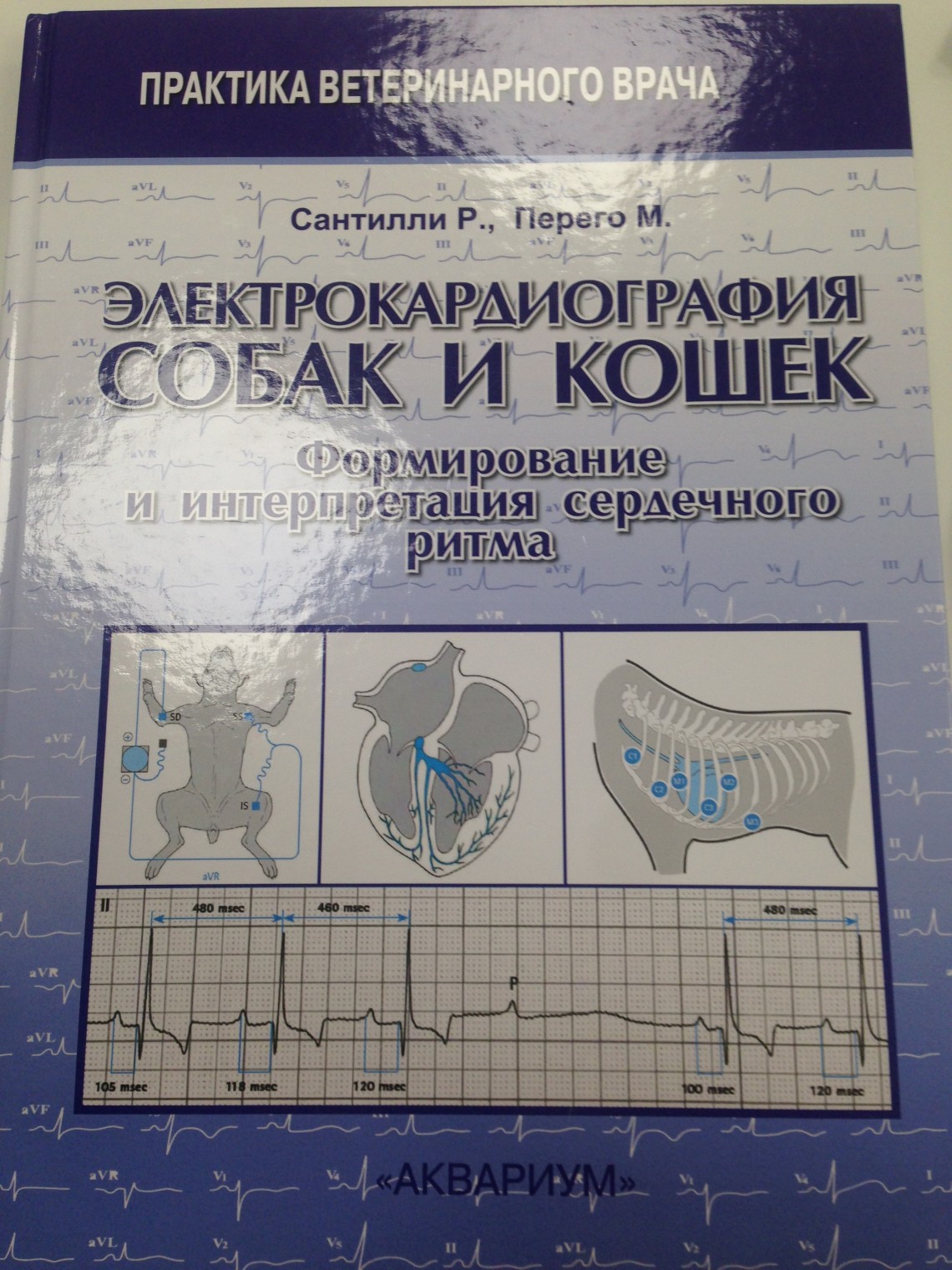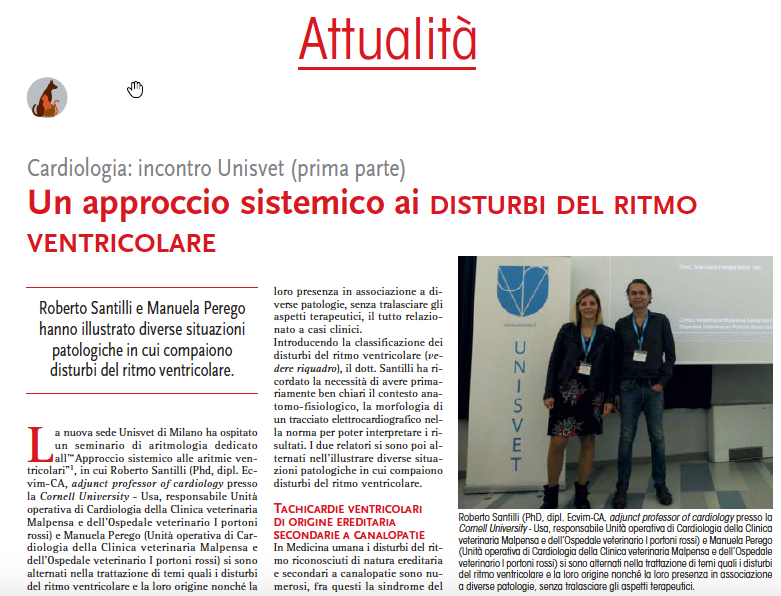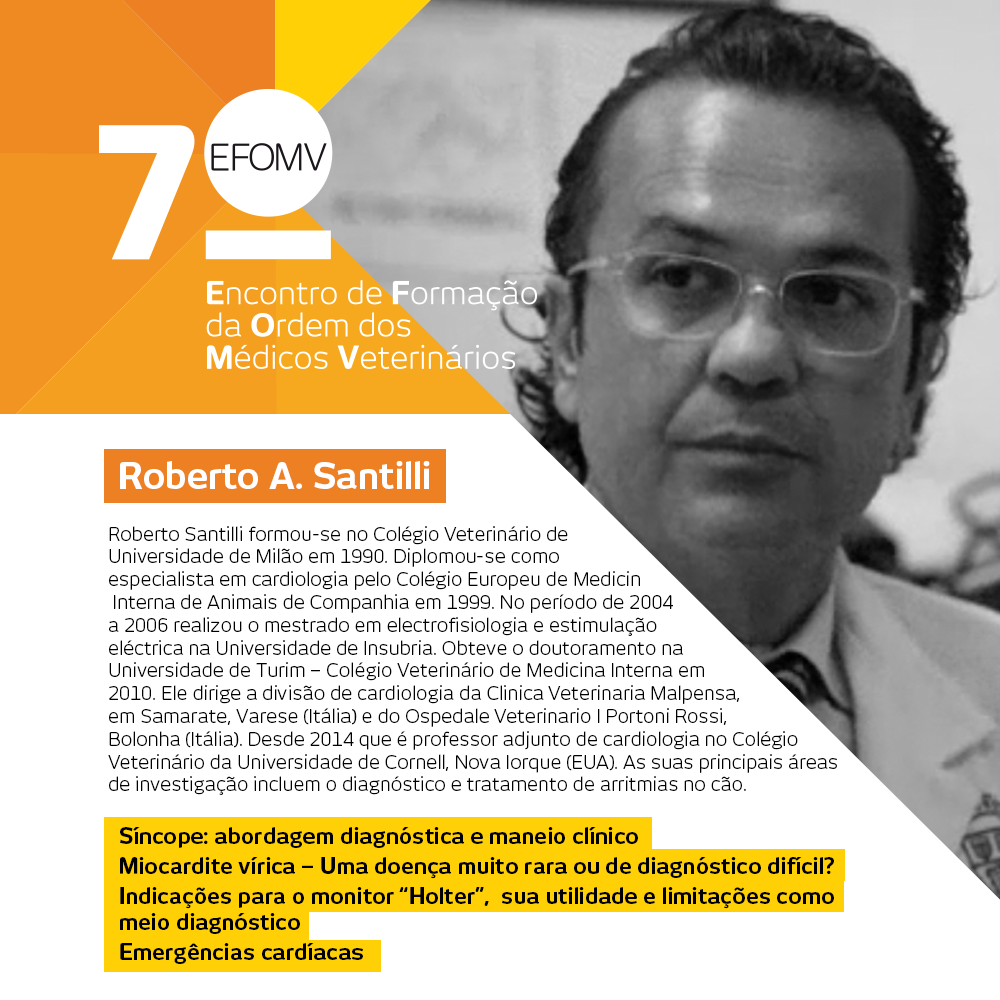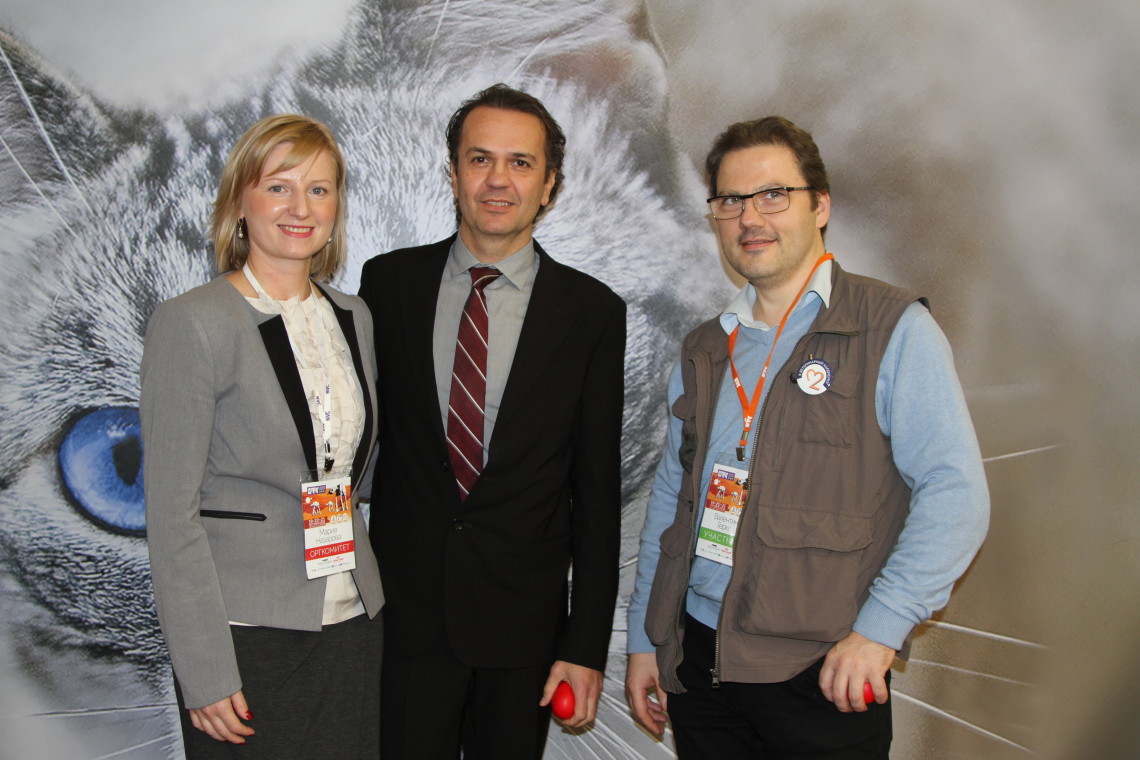New Book available with the latest updates on arrhythmias in dogs and cats and it’s edited EDRA Publishing as hard copy and e-book. https://www.edizioniedra.it/Cardiac_arrhythmias_in_dogs_and_cats.aspx.
This textbook came from the work of Prof. Roberto Santilli, Prof. Romain Pariaut and Dr Manuela Perego.
Designed to cater to veterinary specialists in cardiology, anesthesia, intensive care, and emergency medicine as well as to general practitioners seeking to expand their knowledge of the analysis and treatment of arrhythmias in dogs and cats, this book explores rhythm disorders from both clinical and pathophysiological standpoints.
For a better understanding of these disorders, each chapter includes detailed information on the cardiac electroanatomy and provides comprehensive descriptions of surface, dynamic, and endocavitary electrocardiographic findings with the latest discoveries in this field. For each rhythm disorder, medical and interventional treatment guidelines are included based on the available literature and the authors’ experience.
The book, organized in six sections including basic science, diagnostic therapeutic and modalities, tachycardias, bradycardias and specific diseases, makes the reader able to understand the mechanisms behind arrhythmias, clinical and diagnostic algorithm of each rhythm disturbance and the therapeutic options due to a clear and detailed text plenty of images and drawings.


